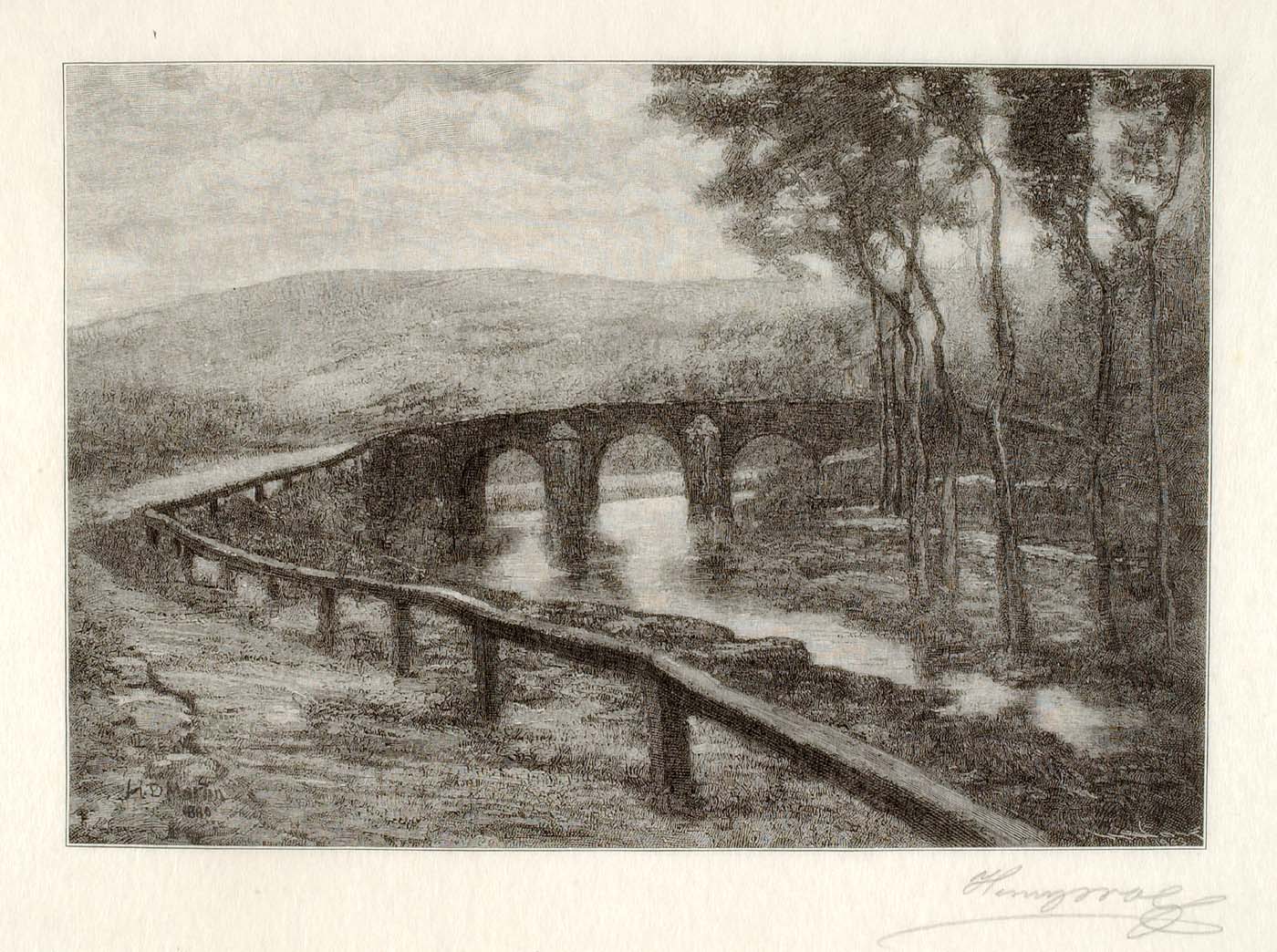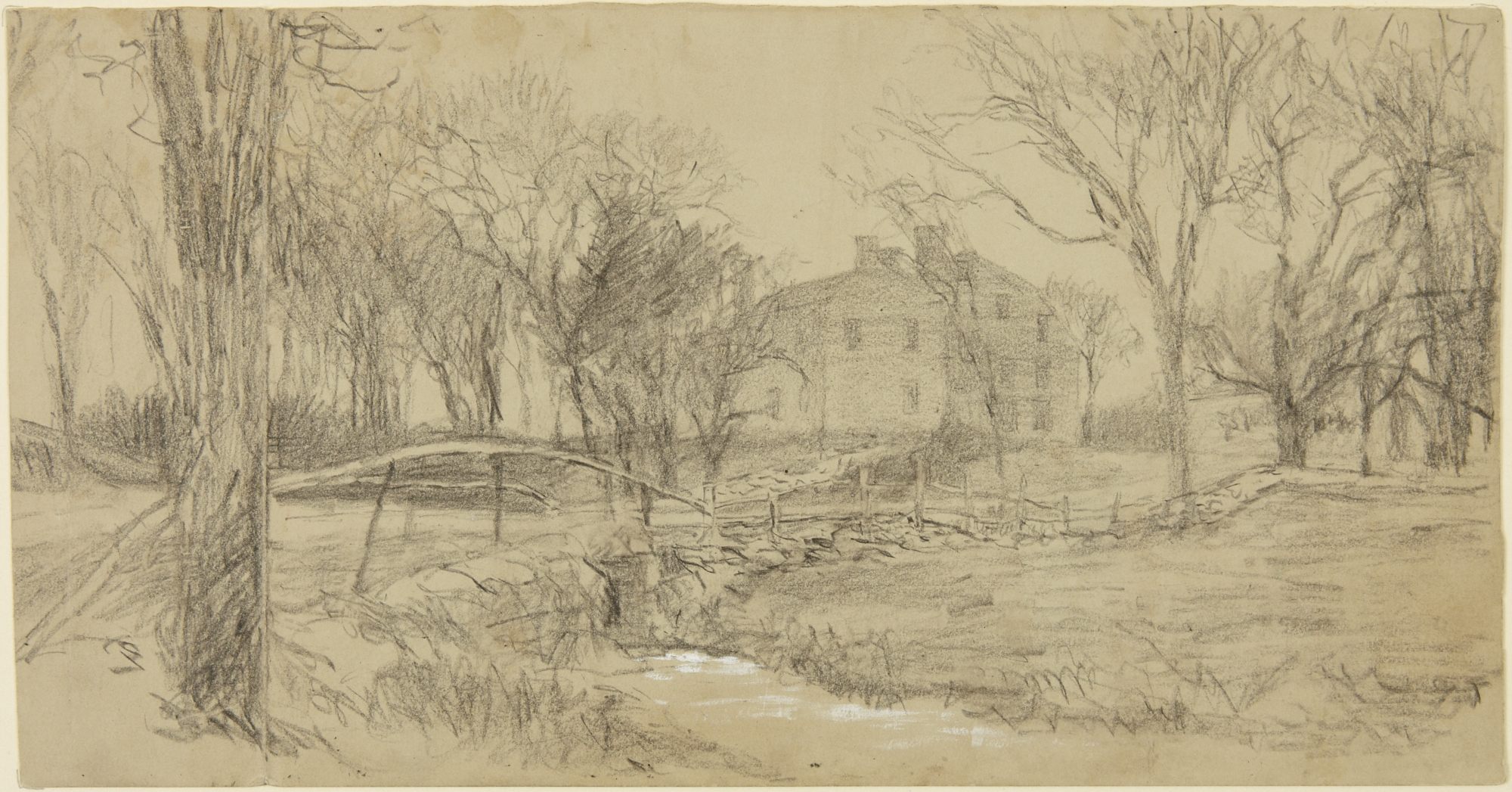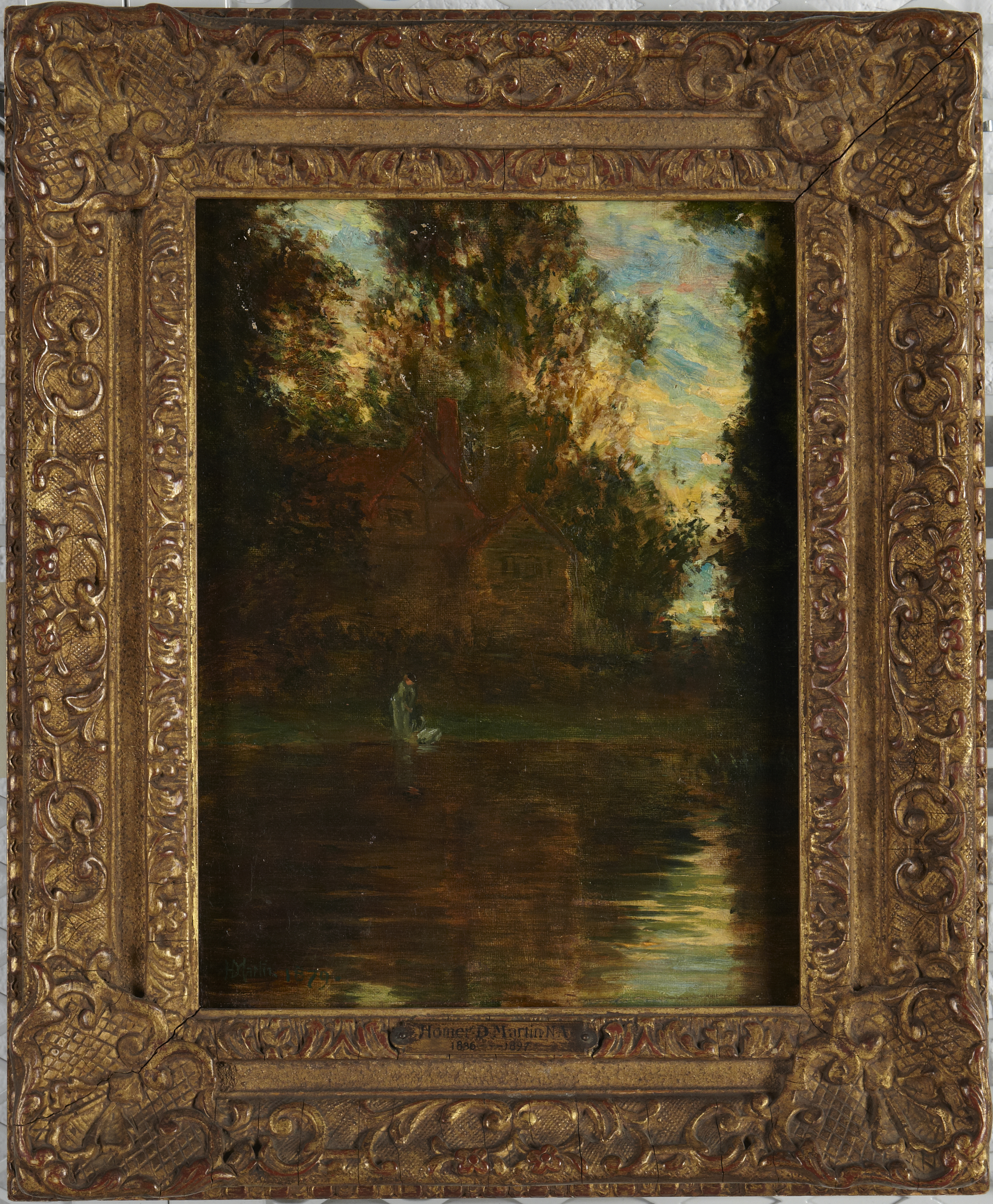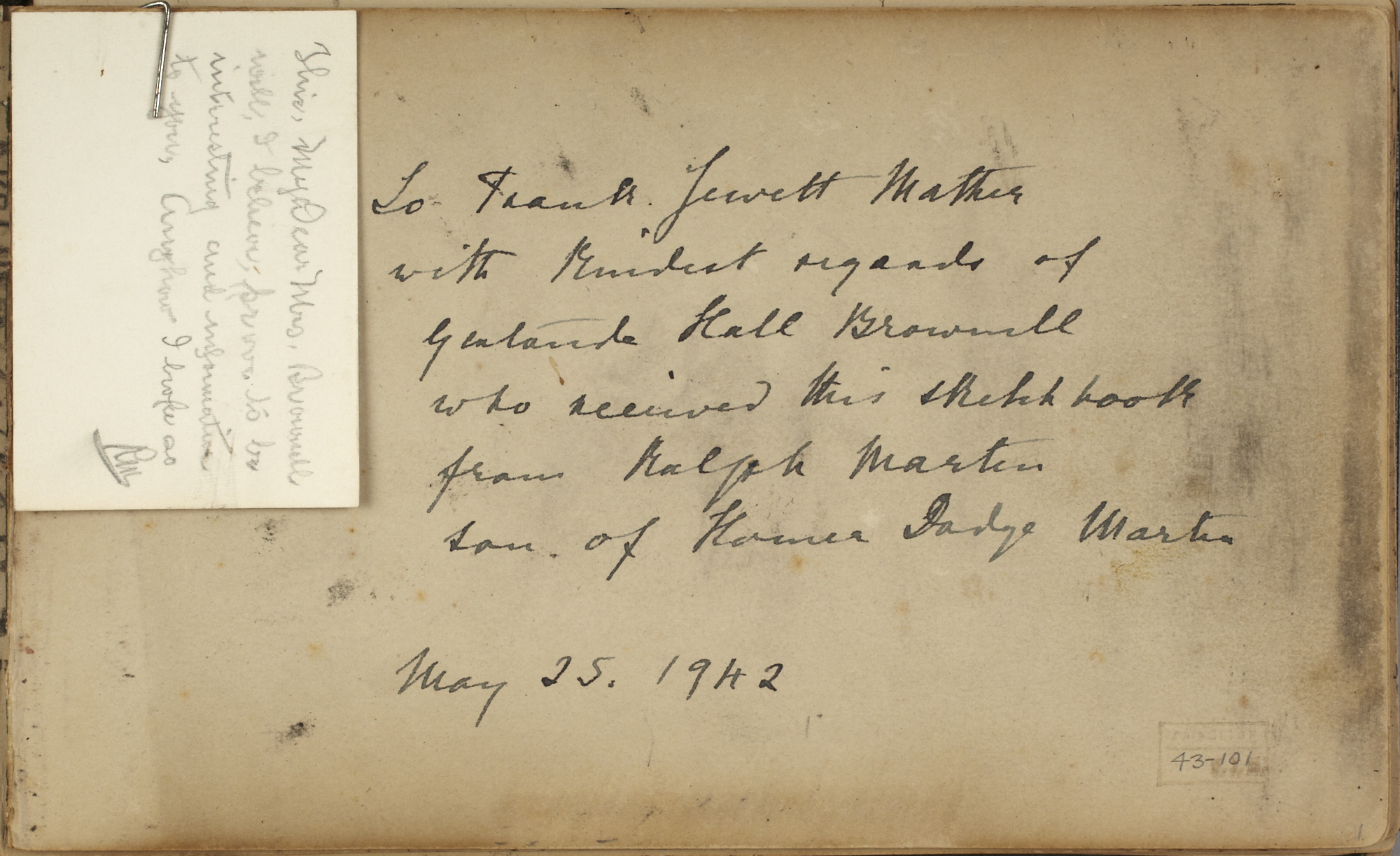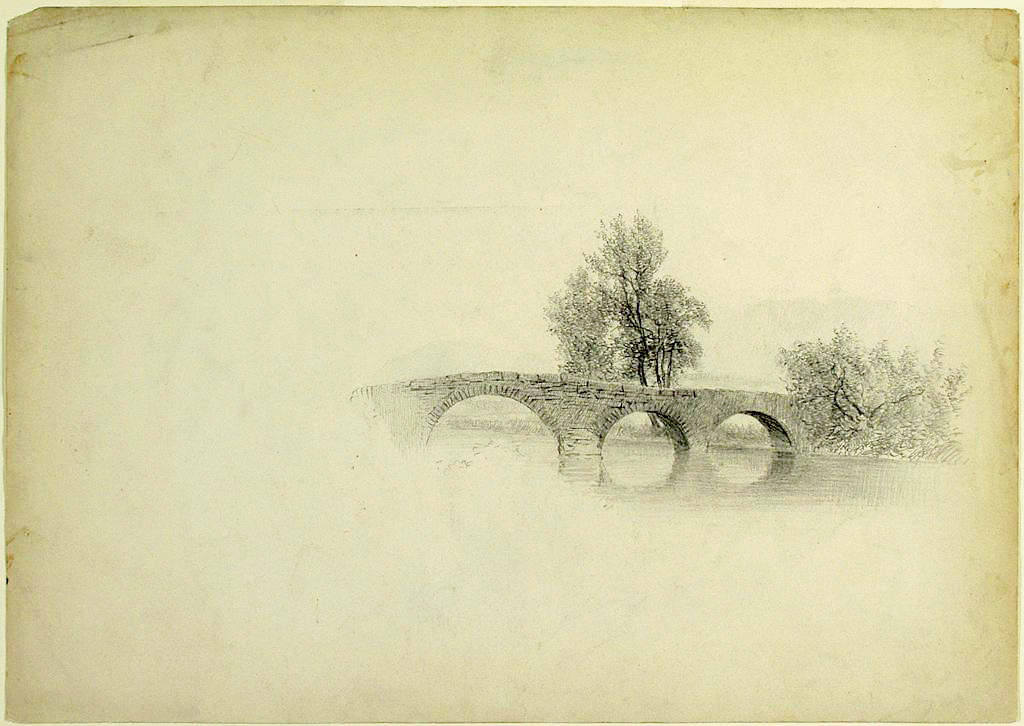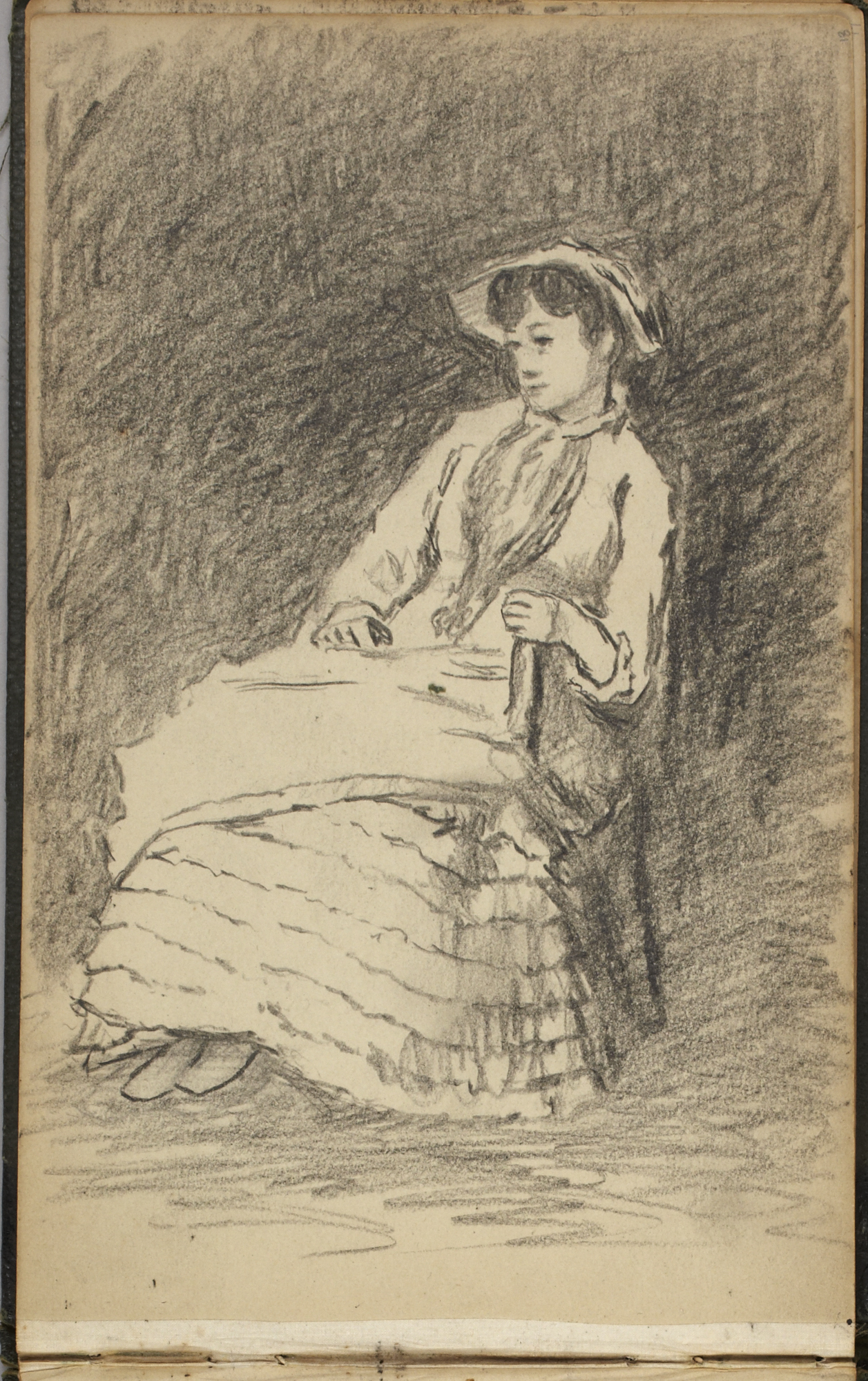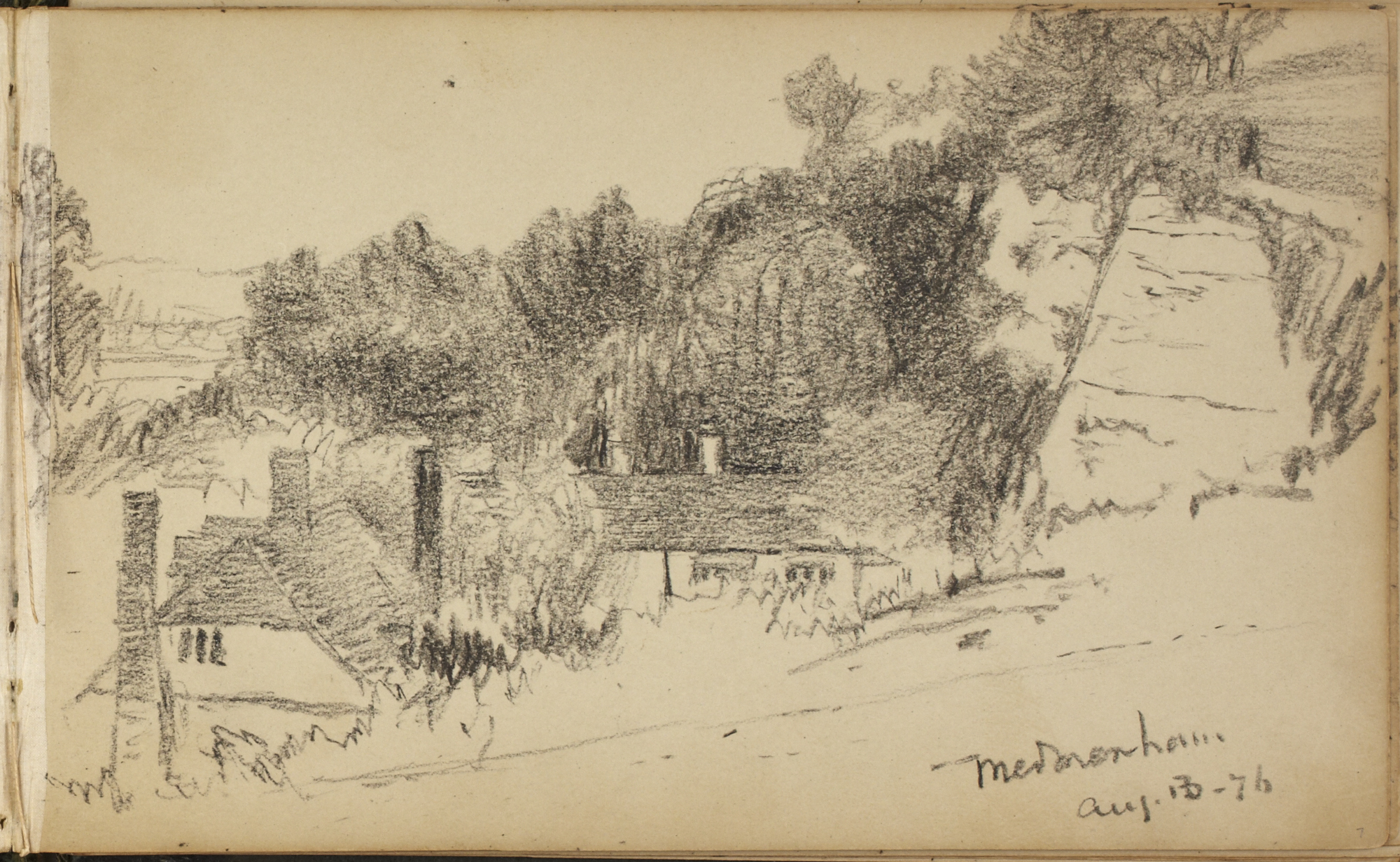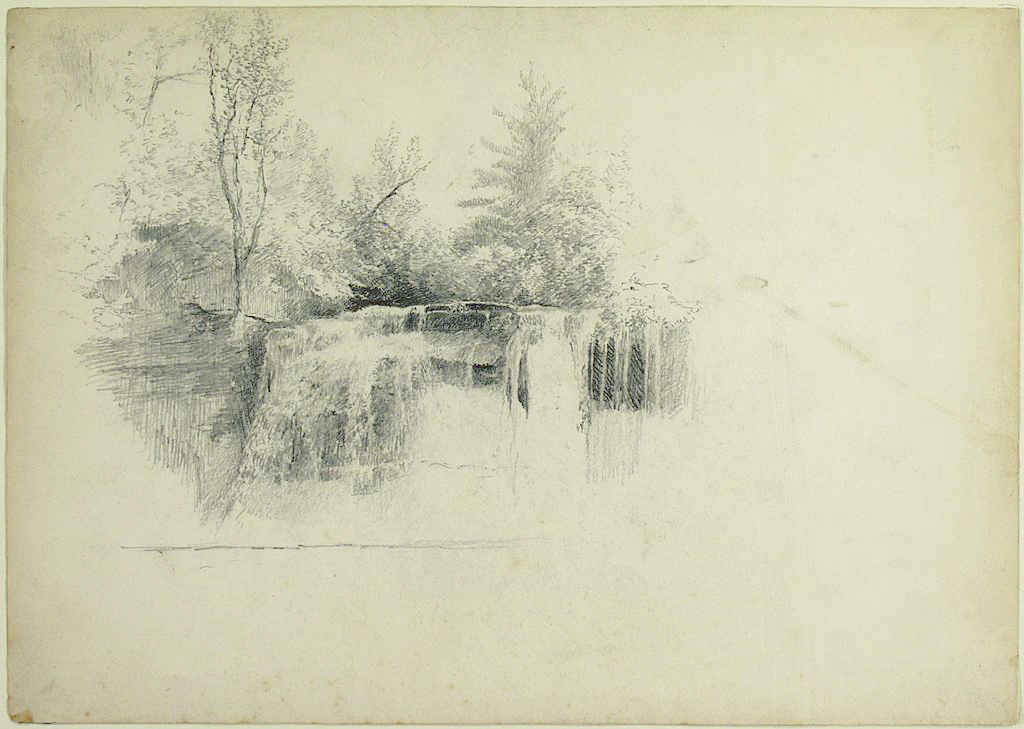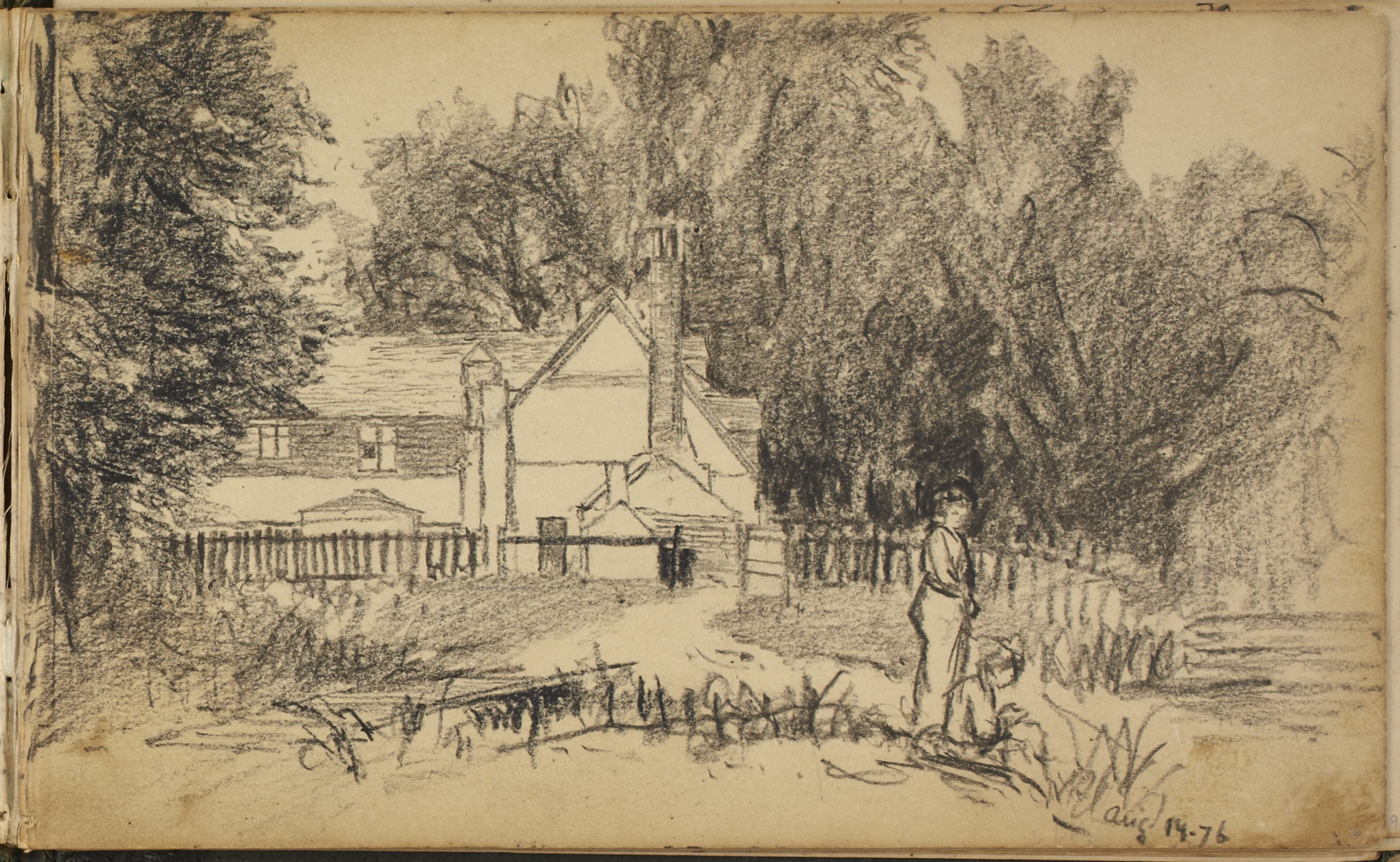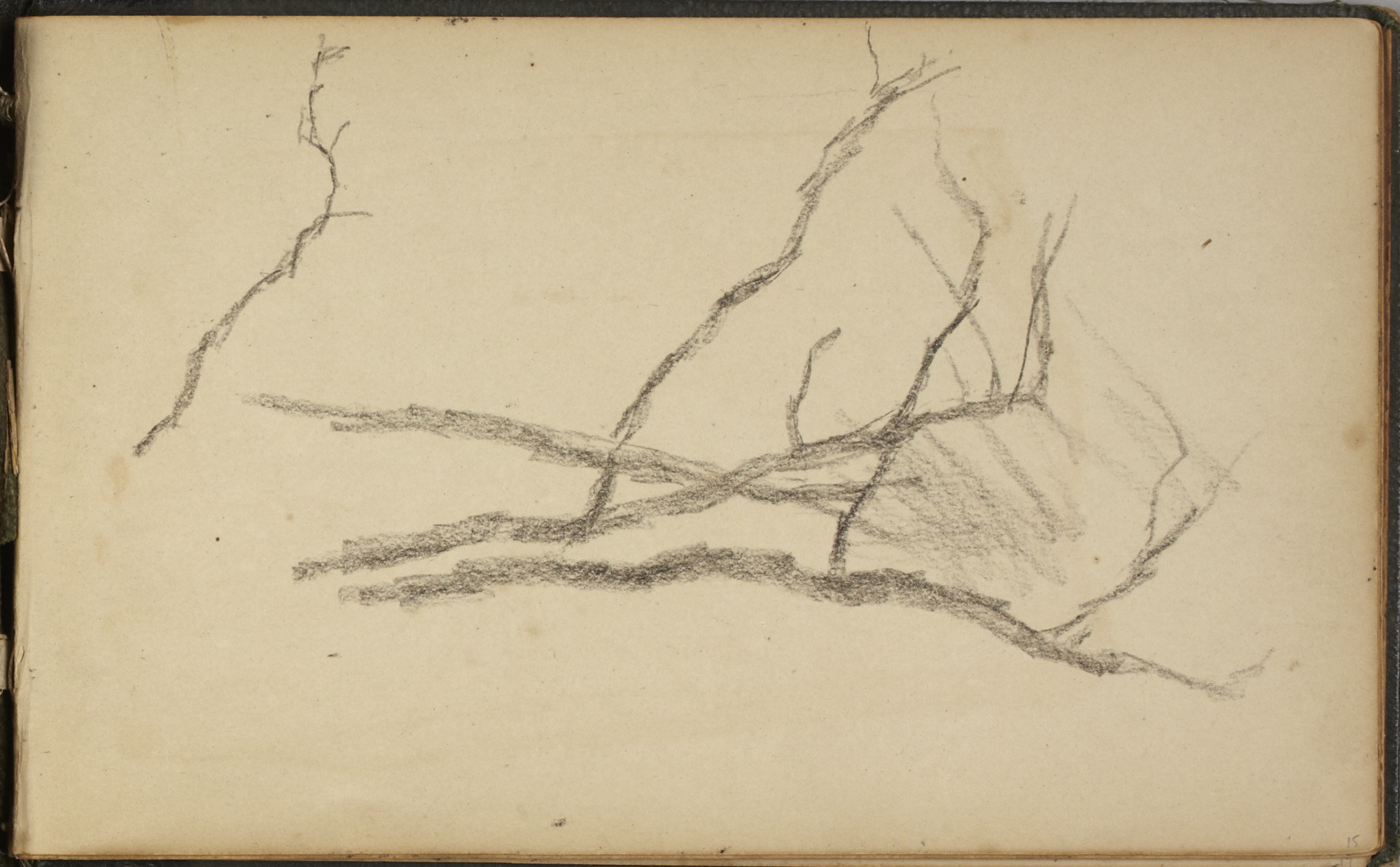Homer Dodge Martin
Homer Dodge Martin, a native of Albany, New York, was largely self-taught. He established his career with cool and tightly painted landscapes in the tradition of the Hudson River school.
In 1862 he moved to Manhattan where he became a friend of John La Farge, who encouraged Martin to soften and poeticize his style. The paintings of James McNeill Whistler also influenced Martin, as seen in the artist's use of softer, muted colors and scumbled forms with blurred edges.
From 1881 to 1886 he lived in France and felt the sway of Corot and the Barbizon plein air artists and the early work of the impressionists. A host of influences had moved him toward the depiction of abstract form stripped of all detail, growth most dramatically realized in his popular masterpiece, The Harp of the Winds (1895), a poetic study of the poplars lining the rural embankment of the Seine. This and other works were mostly produced in his studio, emotional images recollected after the event.
Throughout his life Martin had suffered a series of ailments, a deepening sense of melancholy, and progressive deterioration of his eyesight. As blindness encroached he moved to Minnesota hoping that the clear air would prove emollient; he died there in 1897.
Emery Battis Artist Biographies for the exhibition American Impressionism: Treasures from the Smithsonian American Art Museum (Washington, D.C.: Smithsonian American Art Museum, 2000
Selected Images of Homer Dodge Martin
Objects at Gilcrease Museum (1)
Objects at Archives of American Art (3)


